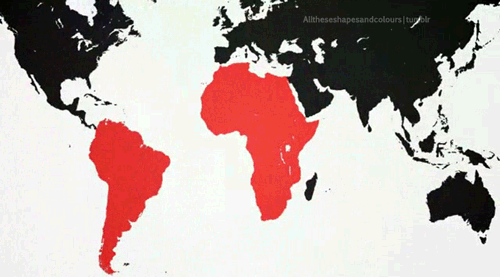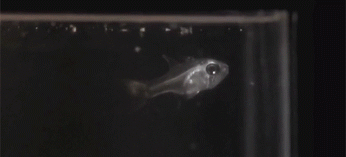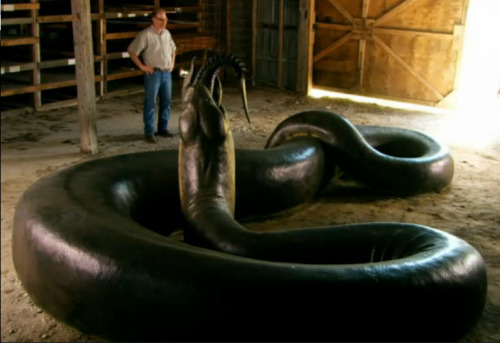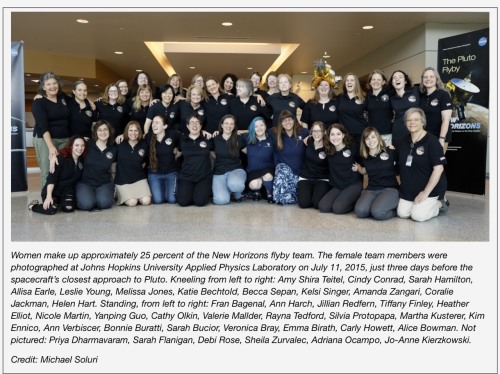Stardate: 2258.42...or, uh, 4... Whatever. Life is weird, at least we've got science.
75 posts
Latest Posts by saients - Page 3

i think it’s a universal truth that everyone in our generation takes pluto’s losing its planetary status as a personal offense


Stepping on Lava
GIF made by Sixpenceee. Original video via YouTube.
okay but what if angels are black holes and halos are just the light warping around them being pulled in by gravity
What colour space actually is? I always thought of it as a dark dark dark blue. Why is so? Are we even able to name the colour of it?
Well most of space is very low density and very low pressure. Color is either emitted (as it is by stars, or a lightbulb) or when light interacts with a material. In space if you’re near something emitting light or reflecting light, you will see that color. If you are far enough away from all light, it would be black. Without a material to absorb or reflect light, it just keeps traveling on its path. So if no one observed the stars while floaring out in space (light interacting with your eye) would there actually be light there???? Philosophy questions for the new era
Planets i learned about via youtube while procrastinating my english essay
Planet 55 Cancri e is basically a giant diamond. like the planet is a diamond. and it would be worth $26.9 nonillion
Planet Gliese 436 b is an ice planet that is constantly on fire do to its close proximity to its parent star. the ice doesn’t melt bc the planet’s gravity is so strong it physically prevents the ice from melting
Planet HD 189733b rains sideways glass…. constantly
Planet J1407-B has planetary rings that are 200x the size of saturn. if saturn’s ring were as big as J1407-B’s we’d be able to see them with our naked eye from earth AND they would dominate our sky and look larger than a full moon
Planet Wasp-12b rotates so close to its parent star that its slowly being consumed by the it
Planet Gliese 581c is one of the candidates for a planet that can support life however it orbits a tiny dwarf star and is tidally locked so one side is constantly subject to immense sunlight while the other is constantly in darkness. there’s a small area of the planet however, that is just the right temp to support life. u just can’t step out of said area. the skies are red and the plants would have be a black color instead of a green bc they would use infrared light for photosynthesis. (a message was actually sent to the planet in 2008 in hopes that there’s life on the planet but the message wont reach the planet until 2029).
Planet GJ 1214b is a water planet nicknamed “water world” is has no land at all and the water is so deep it goes down miles all the way to the planet’s core.
Planet Wasp-17b is the largest planet discovered thus far. its so large its existence contradicts our understanding of how planets are formed. and it has a retrograde orbit, so it orbits in the opposite direction of its parent star.
Planet HD 188753 has 3 suns you should have triple shadows and there would be almost daily eclipses. and no matter which direction u face on the planet u would always see a sunset
Planet HD106906b is the loneliest planet discovered thus far. its known as “super jupiter” bc its 11x bigger than jupiter. it orbits its parent star at a distance of 60 billion miles (which is v strange) hence why its the loneliest planet.
Planet Tres 2b is the darkest planet known. it reflects less than 1% of light (it reflects less light than coal and black acrylic paint). the tiny part of the planet that does reflect light is red making the planet glow a dim red.

I’m serious


The Titanoboa, is a 48ft long snake dating from around 60-58million years ago. It had a rib cage 2ft wide, allowing it to eat whole crocodiles, and surrounding the ribcage were muscles so powerful that it could crush a rhino. Titanoboa was so big it couldn’t even spend long amounts of time on land, because the force of gravity acting on it would cause it to suffocate under its own weight.




New comic! (link)
I’m going to be honest, this it the most I have ever used the science courses I took in undergrad. Glad all those thousands of dollars finally paid off.
Do you know what missiles at night look like? They look like this:

and this:

and these:

But do you know what they do not fucking loOK LIKE?? THIS:

OR THIS:

And they don’t fucking sound like this (listen with earbuds/headphones): https://twitter.com/angelsuxx/status/663202170502680577
This has been disproving the government’s bullshit with Lily



Women scientists made up 25% of the Pluto fly-by New Horizon team. Make sure you share this, because erasing women’s achievements in science and history is a tradition. Happens every day.
.
http://pluto.jhuapl.edu/News-Center/News-Article.php?page=20150712

Please join the Department of Awesome Natural Phenomena as they marvel at the jaw-dropping sight of a ‘dirty thunderstorm’ taking place above Sicily’s Mount Etna during its latest eruption on December 3, 2015. Mount Etna is the tallest active volcano on the European continent.
A dirty thunderstorm, also known as volcanic lightning, is the result of electrical charges generated by the collision of rock fragments, ash, and ice particles in a volcanic plume. These collision produce a static charge in the same way that colliding ice particles do during regular thunderstorms.
Freelance photographer Marco Restivo captured this incredible image by combining a sequence of five separate photos.
Head over to The Huffington Post for timelapse video and additional images.
[via The Telegraph]





Vera Rubin, the woman who discovered the first evidence of dark matter, has died at 88
Vera Rubin, the astrophysicist responsible for confirming the first existence of dark matter, died on Sunday night at the age of 88.
Carnegie Institution president Matthew Scott called Rubin “a national treasure as an accomplished astronomer and a wonderful role model for young scientist.”
Rubin and her colleagues observed galaxies in the 1970s, they learned the motion of stars is a result of a “material that does not emit light and extends beyond the optical galaxy” — also known as dark matter.
Swiss astrophysicist Fritz Zwicky proposed the idea of dark matter in 1933, but Rubin’s groundbreaking work subsequently led to the confirmation of the material.
This finding is what led to the discovery that 90% of the universe is made up of dark matter, a finding some colleagues felt was overlooked and deserving of a Nobel Prize. Read more
follow @the-future-now

Vera Rubin, the groundbreaking astrophysicist who discovered evidence of dark matter, died Sunday night at the age of 88, the Carnegie Institution confirms.
Rubin did much of her revelatory work at Carnegie. The organization’s president calls her a “national treasure.”
In the 1960s and 1970s, Rubin was working with astronomer Kent Ford, studying the behavior of spiral galaxies, when they discovered something entirely unexpected — the stars at the outside of the galaxy were moving as fast as the ones in the middle, which didn’t fit with Newtonian gravitational theory.
The explanation: Dark matter.
Adam Frank, an astrophysicist who writes for NPR’s 13.7 blog, described dark matter by comparing it to a ghost in a horror movie. You can’t see it, he writes — “but you know it’s with you because it messes with the things you can see.”
Adam continued:
“It was Vera Rubin’s famous work in the 1970s that showed pretty much all spiral galaxies were spinning way too fast to be accounted for by the gravitational pull of the their ‘luminous’ matter (the stuff we see in a telescope). Rubin and others reasoned there had to be a giant sphere of invisible stuff surrounding the stars in these galaxies, tugging on them and speeding up their orbits around the galaxy’s center.”